The sheep in the extreme group were reared in a covered shed with 1m2 / animal floor space. Under the zero-grazing system, fodder and water were managed according to hygiene. Zero grazing is a system where hay is mown, and sheep are fed fresh daily. It allows the farms to use fresh grass and increase milk production from grass/forage where the farm does not have sheep grazing infrastructure. Especially at low milk prices, extra fresh grass feed can help reduce feed costs. Let’s find out more information about Zero grazing sheep farming.
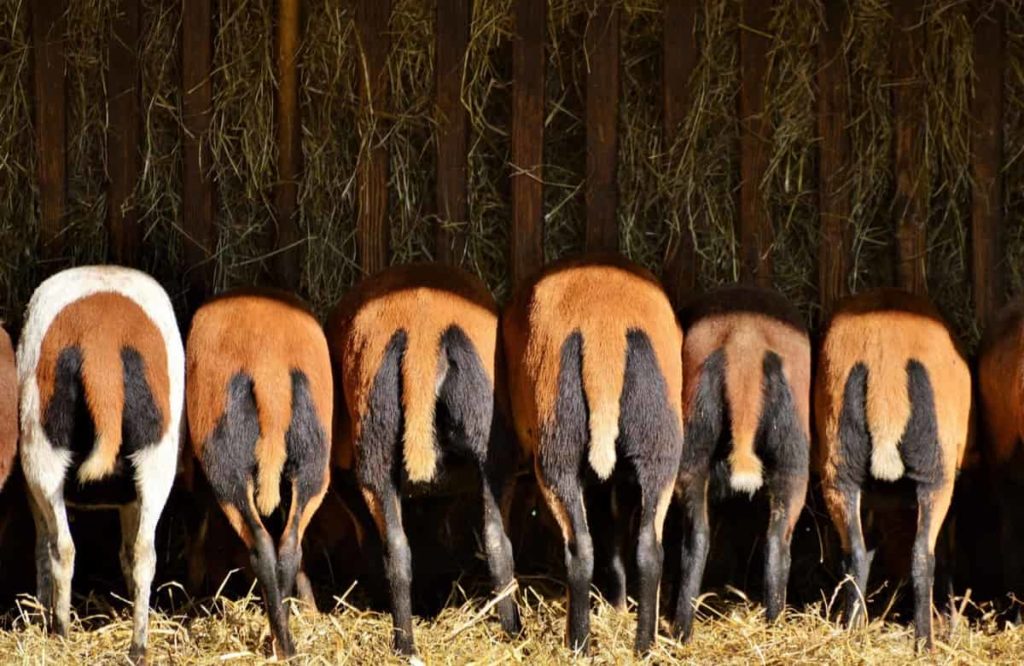
Zero grazing can also play a role when very wet fields are used for grazing, provided the used machines have wide enough wheels to distribute their load safely. Grassland management flexibility and skills are critical to a Zero grazing system; access coverage is essential. The sheep in the extreme group were reared in a covered shed with 1m2 / animal floor space. Under the Zero grazing system, fodder and water were managed according to hygiene. Adequate food and watering arrangements were made in this group.
The animals were moved to a night shelter in a shed covered with 1m2 / animal floor space in the extensive system. Too many sheep farmers have a zero grazing policy, monitoring every aspect of the sheep diet. There are about 30,000 well-bred sheep. The combination of the two is called semi-intensive. Semi-intensive care is mainly in the northern part of the country, and there are an estimated 40,000 sheep.
Benefits of Zero grazing sheep farming
The Zero grazing farming system is becoming popular day by day. It is a new system with many advantages over traditional sheep farming. High profitability, rapid growth, low maintenance, etc., are some of the essential benefits of Zero grazing sheep farming system. Technological advances have boosted the sheep farming industry’s efficiency, especially for intensive farmers. Milk facilities have improved significantly in recent years, and computerized data recording has further contributed to market development and farm management. The benefits are;
- Increased use of grass
- Flexibility on wet farms possibly allows grass in the feed at the beginning of the season.
- Increased access to grass – such as fields where it is complex or far for sheep to walk.
- You can keep more sheep per unit area of land than the high efficiency of the animals compared to the continuous silage of hay throughout the season. It is obtained by growing high-yielding fodder crops such as Elephant Grass, Giant Setaria, Guatemala, and Lab.
- You can use fodder from areas not accessible for grazings, such as roadsides and steep slopes.
- Sheep are less affected by environmental hazards such as diseases and heat stress.
- Sheep save the energy usually lost in walking during grazing and convert it into more milk and meat production. Manure can be easily collected.
- Zero grazing is labor-intensive. The sheep should be taken to the fodder and watershed. However, you can save time because you don’t have to graze.
- Zero grazing would also help if you had the capital to buy fodder establishments, constructions, equipment, and standard sheep. You need to make sure there is enough feed because planning is key.
How this Farmer Made 5 Lakh Profit from Sheep Farming – A Success Story
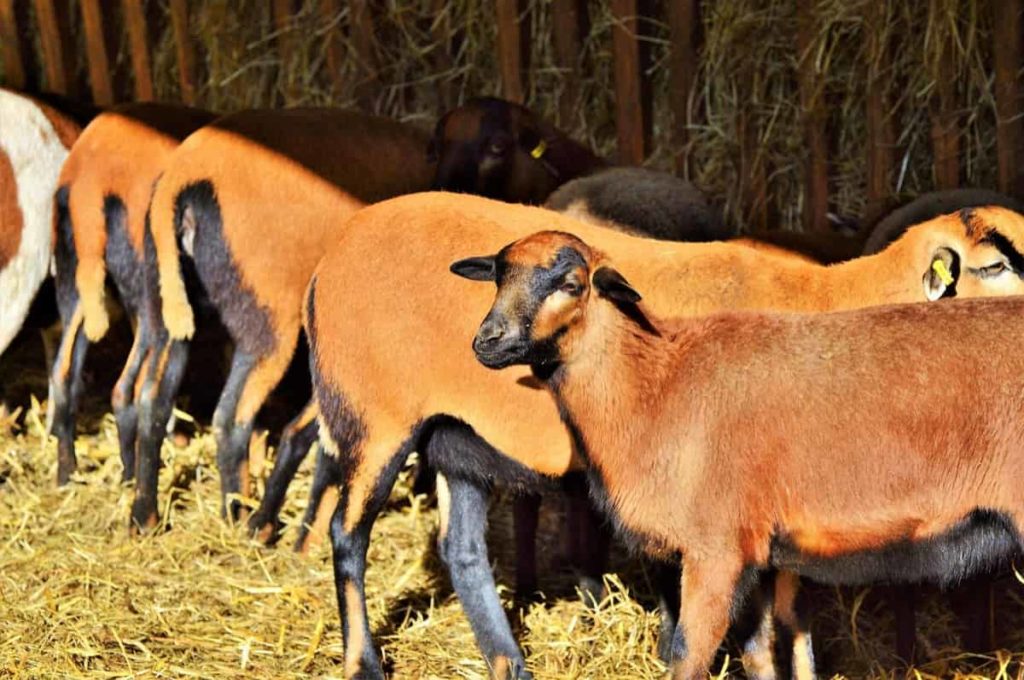
Other benefits of Zero grazing include grass-feeding, improved sheep production capacity, herd expansion, and flexibility with grazing systems. While many benefits have been reported, many challenges need to be addressed, particularly the economic feasibility of ZG.
Characteristics of Stall fed or Zero grazing system
It is a system where animals are raised in a safe area that is well cared for and fed on stalls with fodder, fodder, and concentrated feed grown inside the farm; Zero grazing sheep farming is more commendable for the following reasons.
- It is a system in which sheep are kept indoors with constant limited access and fed in stalls. It means a system where sheep are not left to fend for themselves with minimal care.
- Intensive operation of medium-sized herds of 50 to 250 heads or more focused on commercial milk production is especially good with this system of milking sheep.
- It is capable of exploiting the agro-industrial food system through fodder products.
- This system of management requires more labor and more cash. However, it has the advantage of being closely monitored and controlled by animals.
- In this method, dung is collected in one place and used as good fertilizer. As a result, less space is enough for more animals.
- Animal stress is very low.
- Animals are raised in a disease-free zone.
- Meat quality can be maintained.
- Animals are protected from heat.
- It is very easy to monitor and keep records of animals closely.
- Water is supplied through fencing and pipes except for zero greasing enclosures.
Intensive System-Zero grazing system
- It is a system in which sheep are kept indoors with limited access to land or otherwise, the so-called zero-grazing system of sheep production in which they are fed on stalls.
- It means a system where sheep are not left to fend for themselves with minimal care.
- Herds of 50 to 250 heads or more commercial milk production work well with this system, especially with lactating sheep.
- It can exploit the agro-industrial by-products as pangola grass (Digitaria Decumbens) with the capacity to carry 37 to 45 sheep per hectare.
- This system of management requires more effort and more cash. However, it has the advantage of close monitoring and control over the animals.
- In this method, dung is collected in one place and used as good fertilizer.
- Less space is enough for more animals.
Common Mistakes in Sheep Farming: For the First Time Sheep Owners
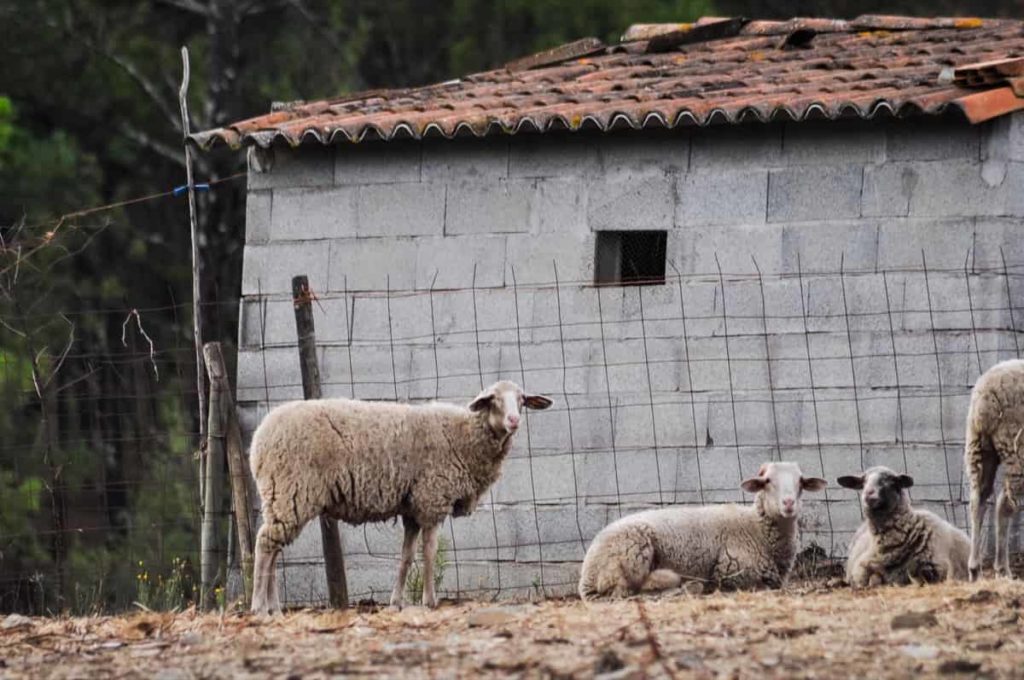
Construction of sheds for stall breeding under Zero grazing system
A typically designed shed consists of an enclosed area and an open area. The floor requirement is 10 square feet/ Animal in a covered area and 20 square feet/animal in an open area. The width of the shed should be north-south and the length east-west. East-west directions should be entirely enclosed by doors, while north-south directions should be open with mesh for proper cross ventilation. Animals are kept in batches/groups according to their age and condition.
Shelter for sheep under Zero grazing system
The sheep prefer to live above the ground. But the sheep are happy to live on the earth. Therefore, a shed is needed to shelter the sheep during the rainy season and at night. Go for low-cost or organized high-cost sheds depending on your investment potential. Cross ventilation and light access are most important in sheep sheds.
An open paddock with a shed is essential. Sheep must be kept here for at least a few hours daily. Sheep are kept inside the shed only at night. Each adult sheep needs an area of 10 square feet. Sheds and paddocks should be covered with a high wire mesh fence to prevent sheep from jumping out. It is recommended to have trees around the farm to keep the environment cool.
Pregnant ewes, lambs, and rams are grouped based on age and body weight. Fodder and medicine must be provided in the required quantity and on time. For this purpose, wire mesh or wooden partitions are made. It is better to use soil for flooring as it absorbs urine and reduces the smell of ammonia. In addition, it is essential for overall good sheep health. You can also use burnt clay bricks to make a floor for easy maintenance, but a cement floor is not suitable. Sheep that regularly lie on the cement floor get injured in bed.
Distributing feed and fodder to a large herd is a difficult task. Feeders are helpful for this purpose, and they can be made of wood or metal sheets. One feeder for 15 to 20 sheep is required to avoid competition. GI sheet water troughs are provided for drinking water. Plastic-coated metal crates are still better. Clean feeders and water drain once a day. Motored and manual chaff cutters are other essentials.
Sheep Farming in the USA: How to Start, A Beginner’s Guide
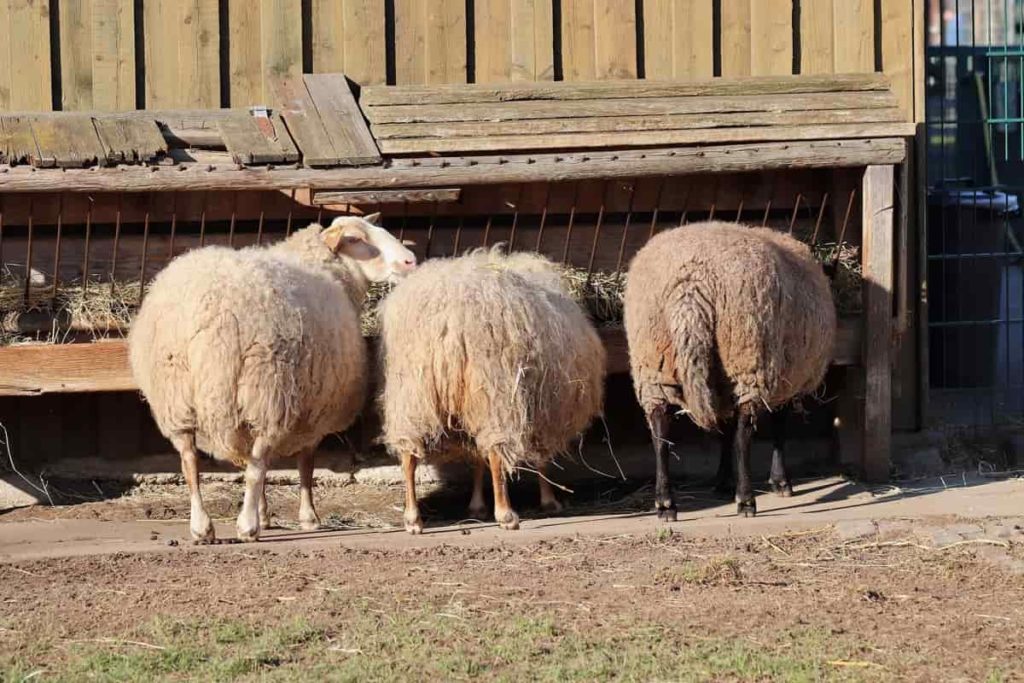
Steps for dairy management Under Zero grazing
Establish fodder banks by growing Elephant Grass or Giant Setaria and supplement them with legumes-like lablab. Apply at least one acre of fodder per sheep. Create a Zero grazing unit with cubicles, a walking area, feed and water troughs, a roof, and a milking area.
Choose the right sheep with the resources available on the farm that is profitable in such situations. In this case, a Friesian is suitable. Give the sheep the right amount of food, for example, a mixture of grass and beans in 3 parts of grass and 1 part of beans. Concentrates such as supplementary feeds should be given to sheep producing more than 8 liters of milk.
Server breeds of sheep are available in India; some are raised on pastures and some on stall-feed. The stall-feed system is a new and upcoming concept called the ZERO GRAZING system of sheep farming in India. Some sheep breeds are suitable for cities and areas where grazing facilities are not available). It is recommended maintaining Sirohi, Jamunapari, and Barbari pure and cross-bred sheep stalls are suitable for the feed farming system.
Due to our tolerance to climate change, they usually are twice a year (8 months). They are profile breeders and usually give birth to twins and three kids in 12 to 15 months. The best meat is obtained from a 6-month-old sheep. Under normal circumstances, the average age of a sheep is about ten years, and it should be given about eight lactating milk, which is taken once a year. A sheep is at its height when it is 4-6 years old. When properly fed, deer can breed from 7 to 8 years.
Key activities of Zero grazing system
- Control of diseases and parasites to reduce mortality and other economic losses
- Proper milking and milking hygiene
- Proper breeding methods such as artificial insemination
- Planning and decision making to assist Keep records of production, health, sales, and procurement.
- Ensure environmental protection for sustainable production
- Good sheep feeding and nutrition for alternative stock
Feeding and Nutrition Under Zero grazing system
Under stall feeding – Feeding sheep with zero grazing with the following method.
- Silage – 2 kg per day (morning – 1 kg / evening 1 kg)
- Lucerne or leguminous fodder – 500 gm / day / animal – once daily
- Concentrate feed – 200 gm / animal / day – daily – once daily
- Mineral mixture – 10 g / animal / day – once daily
Sheep Farm Insurance in India, Companies, Policy, and Premium
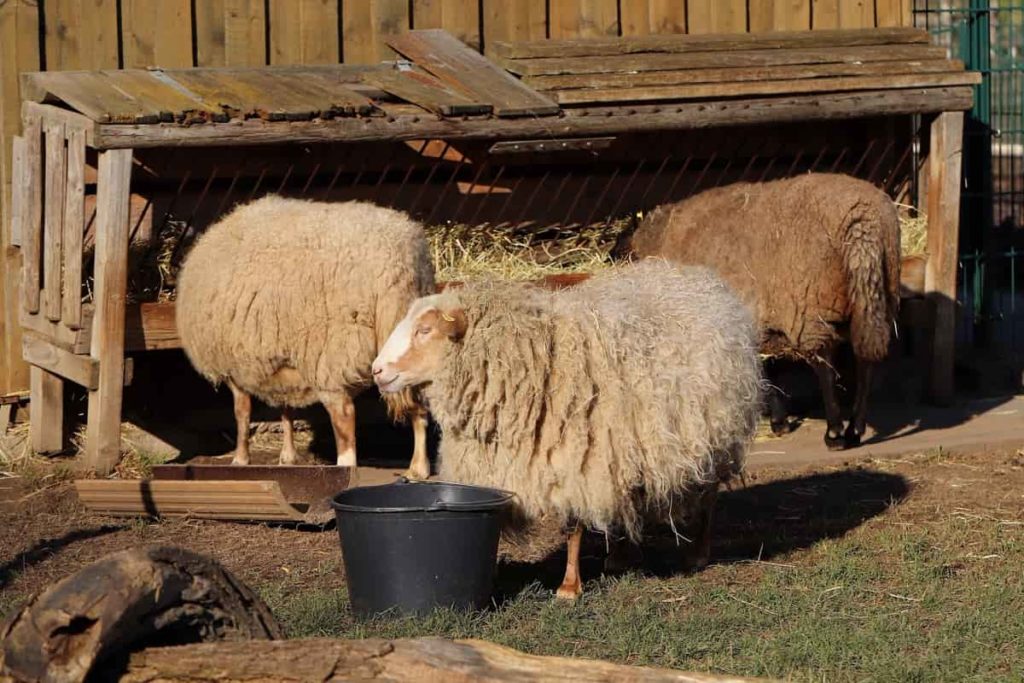
Flexible and grassland management – It is important to implement the zero-grazing system; it is important to provide fresh grass for sheep. Proper planning ahead and organizing are key. To keep the grass fresh, it is advisable to mow at least twice a day, ensuring minimal damage.
Quality – Good as conventional grazing grass. Pruning should be done slightly higher than the grazing cover. A cover of 3,200 – 3,500 kg DM/ha (dry matter per hectare) can ensure quality and production.
Monitoring quality – Maximum efficiency and regular monitoring of animal health are required. Grass quality can be measured by NIR analysis, highlighting any adjustments in the current ratio.
Location – Reiterating sheep signals and making sure the sheep has enough space promotes intake and performance. Monitor the level of waste to ensure maximum intake. Refused feeds should be removed daily (they will melt faster). Zero grazing units aim to get less than 5% waste.
Silage – Swards that have crossed the grazing cover should be cut from the rotation and used for silage.
Supplementary feeding
Supplementary feeding should be viewed in a similar yield response as grazing. If the fresh grass is dry, the rate of silage replacement may be higher, so beware of more buffering and loss of feed. If fresh grass is mixed with silage buffer, the mixture can be tasteless, so the top dressing method is recommended. Make sure the minerals are balanced, especially magnesium.
Limitations and Challenges of Zero Grazing Sheep Farming
- Some research has shown that zero-grazing farms have performed poorly from an environmental and economic point of view due to less efficient use of concentrated and by-products.
- Labor and machinery requirements can add to the cost.
- Infrastructure and sludge management for sheep if housing is increased.
Dairy Disease Symptoms and Treatment for Cows, Cattle, Goats, and Sheep
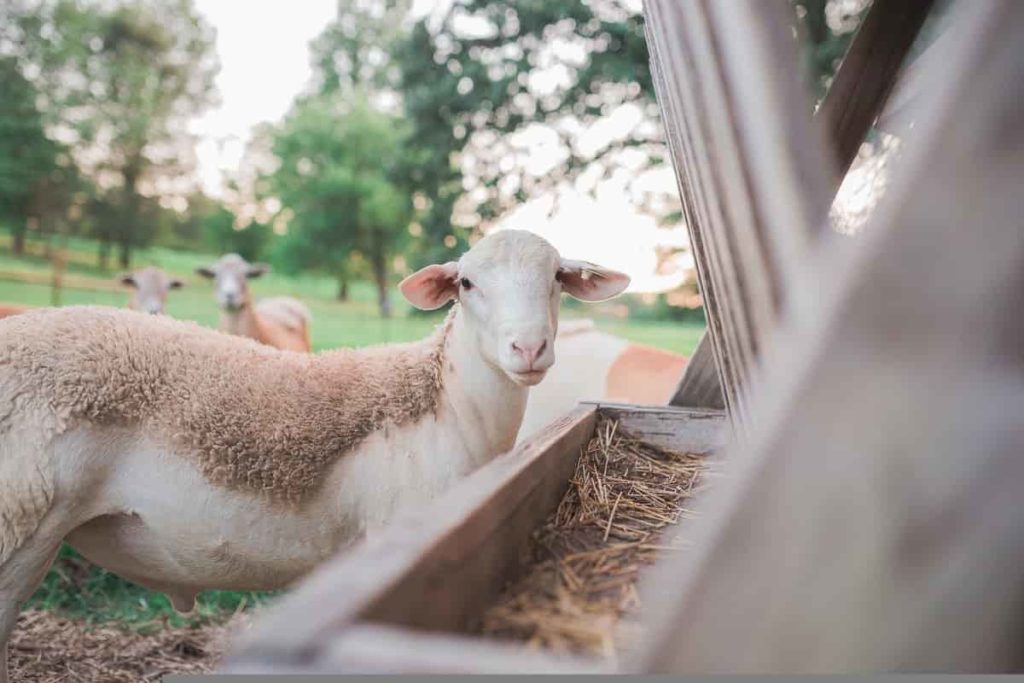
Challenges
- High grazing costs, including investment in machinery, fuel, and wear and tear, or contractor charges for feeding the grass to sheep
- Daily changes in the amount of DM material and dry matter can affect animal performance
- The cut grass will spoil and should ideally be eaten within 12-18 hours.
- The increased cost of storing, handling, and spreading sludge compared to grazing systems
- Feed space requirements (2 ft/head) are large, and all animals should be able to access feed at a time.
- High demand for labor
- Types of Pesticides Used in Agriculture: A Beginner’s Guide
- Economical Aquaculture: A Guide to Low-Budget Fish Farming
- 15 Common Planting Errors That Can Doom Your Fruit Trees
- How to Make Houseplants Bushy: Effective Tips and Ideas
- Innovative Strategies for Boosting Coconut Pollination and Yield
- Pollination Strategies for Maximum Pumpkin Yield
- The Complete Guide to Chicken Fattening: Strategies for Maximum Growth
- Natural Solutions for Tulip Problems: 100% Effective Remedies for Leaf and Bulb-Related Issues
- Revolutionizing Citrus Preservation: Towards a Healthier, Greener Future
- Natural Solutions for Peony Leaf and Flower Problems: 100% Effective Remedies
- Maximizing Profits with Avocado Contract Farming in India: A Comprehensive Guide
- Natural Solutions for Hydrangea Problems: 100% Effective Remedies for Leaf and Flowers
- The Ultimate Guide to Choosing the Perfect Foliage Friend: Bringing Life Indoors
- From Sunlight to Sustainability: 15 Ways to Use Solar Technology in Agriculture
- The Ultimate Guide to Dong Tao Chicken: Exploring from History to Raising
- The Eco-Friendly Makeover: How to Convert Your Unused Swimming Pool into a Fish Pond
- Mastering the Art of Delaware Chicken Farming: Essentials for Healthy Backyard Flocks
- 20 Best Homemade Fertilizers for Money Plant: DIY Recipes and Application Methods
- How to Craft a Comprehensive Free-Range Chicken Farming Business Plan
- Brighten Your Flock: Raising Easter Egger Chickens for Beauty and Bounty
- How to Optimize Your Poultry Egg Farm Business Plan with These Strategies
- Subsidy for Spirulina Cultivation: How Indian Government Schemes Encouraging Spirulina Farmers
- Ultimate Guide to Raising Dominique Chickens: Breeding, Feeding, Egg-Production, and Care
- Mastering the Art of Raising Jersey Giant Chickens: Care, Feeding, and More
- Ultimate Guide to Raising Legbar Chickens: Breeding, Farming Practices, Diet, Egg-Production
- How to Raise Welsummer Chickens: A Comprehensive Guide for Beginners
- How to Protect Indoor Plants in Winter: A Comprehensive Guide
- Ultimate Guide to Grow Bag Gardening: Tips, Tricks, and Planting Ideas for Urban Gardeners
- Guide to Lotus Cultivation: How to Propagate, Plant, Grow, Care, Cost, and Profit
- Agriculture Drone Subsidy Scheme: Government Kisan Subsidy, License, and How to Apply Online
- Ultimate Guide to Raising Araucana Chickens: Breed Profile, Farming Economics, Diet, and Care
- Bringing Hydroponics to Classroom: Importance, Benefits of Learning for School Students
- Ultimate Guide to Raising Polish Chickens: Breed Profile, Farming Economics, Diet, and Care
- Ultimate Guide to Raising Australorp Chickens: Profile, Farming Economics, Egg Production, Diet, and Care
- Silkie Chicken Farming: Raising Practices, Varieties, Egg Production, Diet, and Care
- Sussex Chicken Farming: Raising Practices, Varieties, Egg Production, Diet and Care